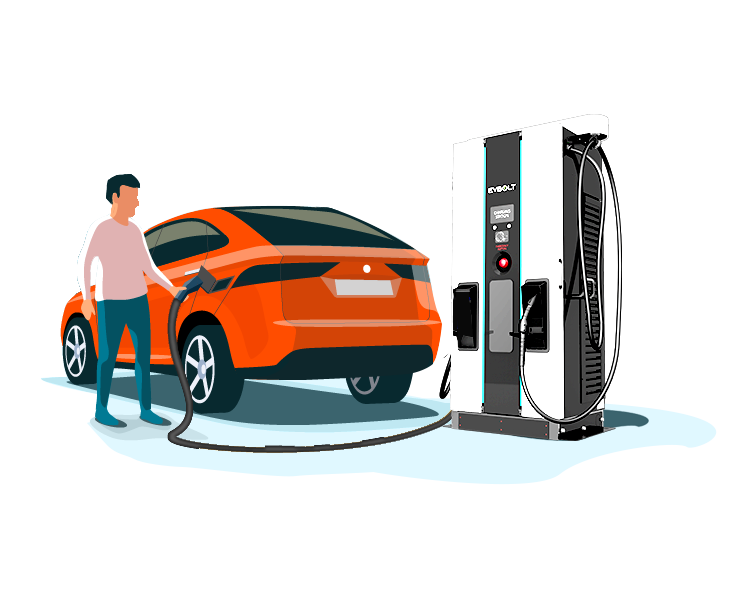FREQUENTLY ASKED QUESTIONS (FAQs)

Your Go-To Resource for Charging Information.
A: To charge your EV using an EV charger, follow these steps:
- Plug the charging cable into the charging port on your EV. The charging port is usually located on the front or back of the vehicle.
- Connect the other end of the charging cable to the EV charger. Some chargers may require you to use a special adapter to connect the cable.
- Plug the EV charger into an electrical outlet or a dedicated circuit. If you’re using a Level 2 charger, it should be connected to a 240-volt outlet or circuit.
- Turn on the EV charger if necessary. Some chargers have a switch or button that needs to be turned on before charging can begin.
- Monitor the charging process. Most EVs have a display screen or app that shows the charging status and estimated time until the battery is fully charged.
A: The time it takes to charge an EV using an EV charger depends on the type of charger and the capacity of the EV’s battery. A Level 2 charger, which is faster, can fully charge an EV in 4-6 hours. A Level 3 charger, also known as a fast charger, can charge an EV in as little as 30 minutes to an hour.
A: To find a charging station for your EV, you can use the EVBOLT app or website, such as PlugShare. These apps and websites allow you to search for charging stations by location, type of charger, and availability.
A: Yes, there are three main types of EV chargers: Level 2 and Level 3. Level 1 chargers are the slowest and use a standard 120-volt outlet to charge an EV. Level 2 chargers are faster and use a 240-volt outlet or circuit to charge an EV. Level 3 chargers, also known as fast chargers, are the fastest and use a high-voltage DC current to charge an EV in a short amount of time.
A: Most EVs have a display screen or app that shows the charging status and estimated time until the battery is fully charged. You can also check the charging indicator on the EVBOLT EV charger to see if the charging process is complete. If the indicator is solid green , it usually means that the battery is fully charged. If the indicator is flashing green, it may indicate that your EV is still charging.
Yes! Some of our stations have built-in Tesla connectors, or you can use the adapter that came with your car.
Yes, that’s correct. The DCFC Charger can charge two EVs simultaneously. The chargers are designed with a smart load balancing system to equally divide the total power (k) output into both ports. If there’s only one EV Charging, then the total output power of the charger is transferred through the single port to the car. Now that doesn’t necessarily mean the car will utilize the full potential of the charger as the Battery Management system (BMS) of each car varies and allows only a certain amount of energy per given time to prevent the battery from damage.
The amount of kWh distributed during a charging session will depend on various factors:
How full your battery is or, your “State of Charge”.
The period of your fast charge.
The temperature of your EV battery.
Other Port loads in use while charging.
EV Battery weakening.
Your vehicle’s current and voltage limits.
